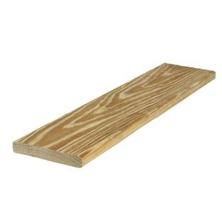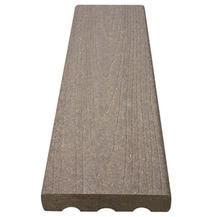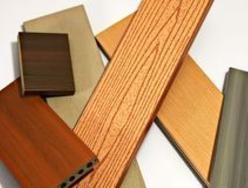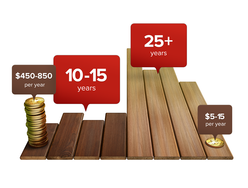
Composite Decks Vs. Pressure Treated Wood
Pressure Treated Wood
Pros:

- Pressure Treated decks in many cases are a cost savings of over 50% compared to the alternative.
- Pressure treated wood doesn't show scratches as much as some composites and can easily be painted, patched, and made to match existing decking rather easily.
- Joist spacing can be twice as long per span, compared to composite. In some cases this will save on material cost.
Cons:
- Pressure treated Decks require much more maintenance than the alternatives.
- New applications of stain will be required every few years until the deck's end of life (about 20 years).
- Pressure washing should be done regularly on a deck, more so if it's in a shaded area that is prone to mold growth.
- The initial savings of a pressure treated deck is usually spent rather quickly on maintenance of the deck.
Composite Decking
Pros:

- Composite decking requires much less maintenance than pressure treated decking.
- Composite decks don't require staining at all.
- Railing systems that compliment PVC and composite decking are available, and are often a nice upgrade.
- The different colors and grains available give a look and feel you couldn't achieve with pressure treated wood.
- Washing: Composite is mold and mildew resistant so pressure washing is necessary a few times a year.
Cons:
- Price. Composite decking usually costs more than double what a pressure treated deck does.
- Composite decks require more structural framing than wood decks and joist spans are almost never more than 12″.
- This boils down to more contractor labor required to install a composite deck.
- Expansion and contraction: Composite must be installed correctly or after time boards can buckle heave or break. This means strict adherence to the manufacturers specs, not only to uphold the warranty, but to have a beautiful deck for years to come.
PVC

Pros:
- Truly maintenance free.
- PVC decking is the only truly maintenance free deck option there is. PVC decking does not mold at all, unlike Pressure Treated.
- You can fasten PVC decking very close to the boards edge without fear of splitting or cracking the deck board.
- Most PVC deck joists can be framed to 16″ centers, reducing the total framing required.
Cons:

- PVC decks are only available in a few color variations due to material limitations. The nice vibrant colors of composite decking are out of the question.
- The price is higher than other decking options.
- Realistic wood grain finishes are not as fine as composite or pressure treated variants.
Conclusion
Depending on one's needs, any of these options, using a quality product, would be a great additional value to the home on a personal and monetary level. Call us about specials and for more information.
I can always be reached on my cell phone to discuss the best option for your needs.
Use This Menu to Locate More Tips for Everyday Math
- Calculating for Contractors (Estimating Tips, Mark up & Gross Profit)
- Calculating Area & Volume for Geometric Shapes
- Calculating & Estimating Concrete Slabs & Masonry Blocks
- Calculating Brick, Concrete, Footers and Mortar
- Calculating Paint & Wallpaper
- Calculating Roofs & Gables (Waste Factors, Felt, Shingles, Nails, Etc.)
- Calculating Wall Studs, Drywall, Ready Mix, Tape, Joint Compound, Nails & Screws
- Calculating Wall Tile & Floor Tile
- Calculating Stairs, Stair Runs, Risers & Stair Terminology
- Calculating Slopes, Soil, Fill Material, Excavation Tips & Color Code for Underground Lines